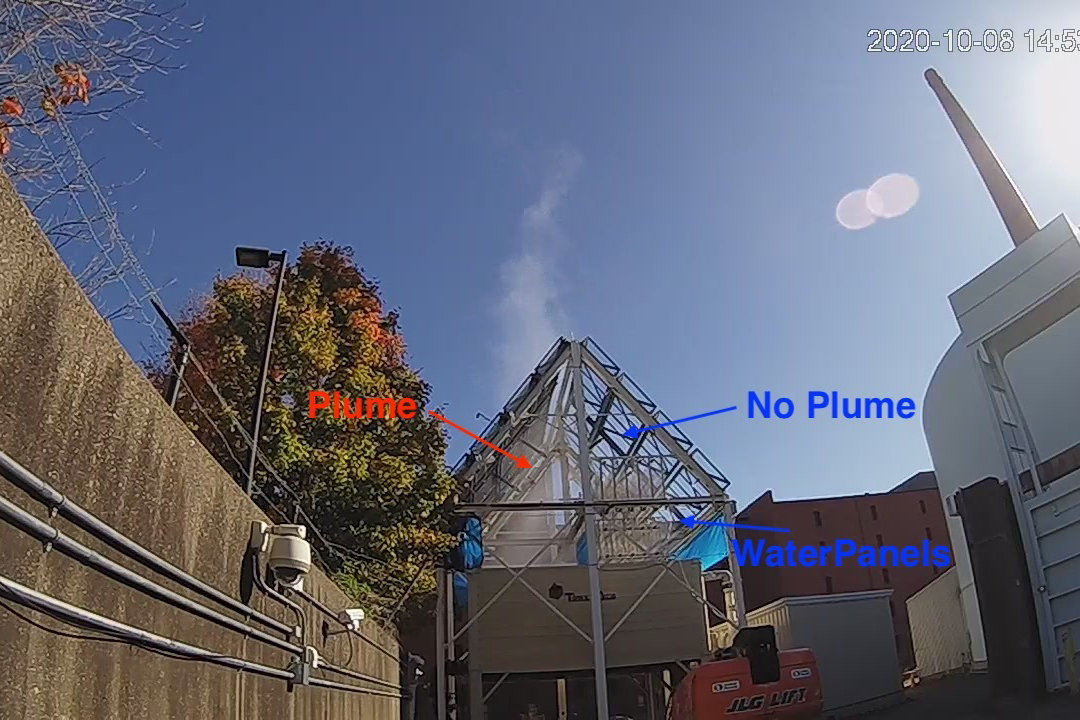THE NORTH AMERICAN WATER AND POWER ALLIANCE (NAWAPA)
THE NORTH AMERICAN WATER AND POWER ALLIANCE (NAWAPA) The North American Water and Power Alliance (NAWAPA) is a project for diverting to the western U.S. and northwestern Mexico water from rivers in Alaska and Canada which now flow into the Arctic Ocean. In addition to providing irrigation water to arid parts of North America NAWAPA would also generate considerable amounts of power and provide some subsidiary benefits such as stabilizing the level of the Great Lakes. The project was formulated by the Los Angeles engineering firm of Ralph M. Parsons Company and got some attention in Congress, particularly from Senator Frank Moss of Utah, but is not politically feasible. In terms of engineering the project is feasible. A series of dams on the headwaters of the Yukon, Copper, Kootenay, Fraser, Peace, and Columbia Rivers can divert their flows into reservoirs. Included among these is the 500 mile long Rocky Mountain Trench, a natural formation which has 16 times the capacity of Lake Mead on the Colorado River. From the Rocky Mountain Trench the water would flow into Montana and central Idaho. The dams would generate electrical power but not all of it would be marketable. Some of the power would be required to pump the water over some mountains in Idaho to a canal where it would flow south along the border area of Utah and Nevada. Here the water flow would be divided into two branches. One would go southwest to Nevada, California, and northwestern Mexico. The other would go east to Arizona, New Mexico, and Colorado. This is the main element of the project. A subsidiary part would take water from the Peace River by canal to the Great Lakes and thereby linkthe praire provinces of Canada with the St. Lawrence Seaway. Other subsidiary elements could link the system to the Pacific Ocean at Vancouver, British Columbia and link Lake Manitoba to the Hudson Bay. As envisioned by the R. M. Parsons Co. the system would deliver 120 million acre-feet of water annually; 78 million to the U.S., 22 million to Canada, and 20 million to Mexico. According to Parsons this would enable Mexico to triple her irrigated acreage, irrigate an additional 40 million acres in the U.S. and 7 million in Canada. NAWAPA would generate 70 million kilowatts of power; 38 million for the U.S., 30 million for Canada and 2 million for Mexico. Parsons estimates that all this would cost $100 billion in 1964 dollars. In 1989 dollars that would be about $339 billion. The question is whether the project is economically justified. Parsons estimates that about 85 percent of the water would be sold to agriculture at $4 ($1964) per acre-foot and the other 15 percent to municipal and industrial users at $15 per acre-foot. At 1964 prices that would result in annual benefits of $0.68 billion or, assuming water prices increased at the same rate as general inflation, in 1989 prices $2.3 billion. The annual gross revenue from electrical power was estimated to be $2.45 in 1964 value dollars. Energy prices since 1964 have increased faster than general inflation. Using the Consumer Price Index for gas and electricity the ratio is 4.57 as compared to 3.39 for goods in general. The revenues in 1989 prices would be $11.2 billion per year. The project is so immense that its construction might be spread over a thirty year period. Here is a reasonable estimate of the costs of the project by five year intervals. Five Year Operating Construction Period Years Costs for 5 years Costs (billions $1989) (billion $1989) 1 1-5 0.0 5.1 2 6-10 0.0 200.1 3 11-15 4.2 33.2 4 16-20 8.5 33.2 5 21-25 8.5 33.2 6 26-30 8.5 33.2 7 31-35 8.5 0.0 8-10 36-60 8.5 0.0 The benefits would follow approximately this schedule: Five Year Period Water Revenue Power Revenue Other Revenue (billions $1989) (billion $1989) (billion $1989 1 0.0 0.0 0.0 2 4.5 22.0 0.0 3 11.5 56.0 8.5 4-10 11.5 56.0 16.9 Estimation of the IRR of NAWAPA To obtain the internal rate of return (IRR) for the project one must find an interest rate at which the net present value (NPV) of the net benefits (benefits less the costs) is zero. The procedure for doing this is to first compute the present value of the revenues over a fifty year period at two particular interest rates, say 4 and 5 percent. Then one computes the present value of the costs over that period at the same interest rates. Then one takes the differences of the present values of the benefits and costs to get the NPVs of the net benefits of the project. One can of course take the differences of the benefits and costs first and then compute the NPV directly, but it is often useful to know the present values of the benefits and costs separately. The present value of the costs, as of 1989, at a discount rate of 4 percent per year is about $234.5 billion, and at 5 percent about $210.6 billion. The present value of revenues over a fifty year period at 4 percent is $241 billion, so the net present value of NAWAPA at a 4 percent discount rate is (241.4-234.5)=$6.9 billion. At 5 percent the present value of the revenues is $198.2 billion, so the net present value at 5 percent is (198.2-210.6)=−$12.4. The internal rate of return (IRR) can be approximated by interpolation. When the discount rate increased by 1 percent (from 4 percent to 5 percent) the net present value fell by (6.9+12.4)=19.3. In order to bring the NPV down from 6.9 to 0 it is necessary to increase the discount rate by (6.9/19.3)x1 percent; i.e. by 0.36 of 1 percent. Therefore the IRR for NAWAPA is approximately 4.36 percent. In the computations it is convenient to use the formula for the present value at an annual interest rate of r of a constant stream of Y dollars per year starting in year T1 and ending in year T2. The stream for a particular year is discounted from the end of that year. The definition of the present value of that stream is PV = Y[1/(1+r)T1 + 1/(1+r)T1+1 + … + 1/(1+r)T2] If this equation is multiplied by 1/(1+r) the resultl is PV(1/(1+r)) = Y[1/(1+r)T1+1 + 1/(1+r)T1+2 + … + 1/(1+r)T2+1] If this equation is then subtracted from the previous equation all terms on the right-hand side cancel out except the first term of the first equation and the last term of the second equation. The result is then PV[1−1/(1+r)] = Y[1/(1+r)T1+1 − 1/(1+r)T2+1] If this equation is multiplied by (1+r) the result is PV[(1+r)−1] = Y[1/(1+r)T1 − 1/(1+r)T2] which reduces to PVr = Y[1/(1+r)T1− 1/(1+r)T2] Thus the formula is PV = Y[1/(1+r)T1 − 1/(1+r)T2]/r or, equivalently PV = Y[(1/r)/(1+r)T1 − (1/r)/(1+r)T2] Present Values of Costs and Revenues of NAWAPA at 4 percent In the computations below the amount for a five-year period is assumed to be evenly spread over the five years so the annual amount is just the five-year amount divided by 5. Operating Costs 11-15 (4.2/5)*(11.1184-8.1109) = 2.5263 16-50 (8.5/5)*(21.4822-11.1184) = 17.6185 total = 20.1448 Construction Costs 1-5 (5.1/5)*4.4518 = 4.5408 6-10 (200.1/5)*(8.1109-4.4518) = 142.8740 11-30 (33.2/5)*(17.292-8.1109) = 60.9625 total = 208.3773 Total PV of costs = 228.5221 Water & Power Revenue 6-10 (26.5/5)*(8.1109-4.4518) = 19.3932 11-50 (67.5/5)*(21.4822-8.1109) = 180.5126 total = 199.9058 Other Revenue 11-15 (8.5/5)*(11.1184-8.1109) = 5.1128 16-50 (16.9/5)*(21.4822-11.1184) = 35.0296 total = 40.1424 Total PV of revenues = 240.0482 net present value = 11.5261 HOME PAGE OF applet-magic HOME PAGE OF Thayer Watkins
The North American Water and Power Alliance (NAWAPA) is a project for diverting to the western U.S. and northwestern Mexico water from rivers in Alaska and Canada which now flow into the Arctic Ocean. In addition to providing irrigation water to arid parts of North America NAWAPA would also generate considerable amounts of power and provide some subsidiary benefits such as stabilizing the level of the Great Lakes. The project was formulated by the Los Angeles engineering firm of Ralph M. Parsons Company and got some attention in Congress, particularly from Senator Frank Moss of Utah, but is not politically feasible.





















